Amiets lyretail - Fundulopanchax amieti
Scientific name: Fundulopanchax amieti
Common name: Amiets lyretail
Family: Nothobranchiidae
Usual size in fish tanks: 6 - 7 cm (2.36 - 2.76 inch)
014
Recommended pH range: 5.8 - 7.2
Recommended water hardness: 12 - 30°N (214.29 - 535.71ppm)
0°C 32°F30°C 86°F
Recommended temperature range: 22 - 28 °C (71.6 - 82.4°F)
The way how these fish reproduce: Spawning
Where the species comes from: Africa
Temperament to its own species: aggressive/territorial
Temperament toward other fish species: aggressive/territorial
Usual place in the tank: Middle levels
Introduction
Fundulopanchax amieti, commonly known as Amiet's Lyretail, is a stunning and unique killifish species native to Africa, particularly Cameroon, Ethiopia, and the Sanaga River region. Known for its vibrant coloration and characteristic lyre-shaped tail, this species is a captivating choice for experienced aquarists. However, due to its specific care requirements and aggressive temperament, it is best suited for species-only tanks.
Food and Feeding
Amiet's Lyretail thrives on a diet primarily consisting of live or frozen foods. Suitable options include bloodworms, daphnia, brine shrimp, and mosquito larvae. These high-protein foods replicate their natural diet and help maintain their vibrant coloration and health. Avoid flake food as it is generally not well accepted by this species. Feed them small portions multiple times a day to match their natural feeding habits.
Habitat and Tank Requirements
To replicate their natural habitat, provide a densely planted tank with floating plants such as Amazon Frogbit (Limnobium laevigatum) or Water Spangles (Salvinia minima) to create shaded areas. Use soft, slightly acidic water with a pH of 5.8-7.2 and hardness of 12-30°N (214.29-535.71 ppm). The temperature should be maintained between 22-28°C (71.6-82.4°F). A dark substrate with subdued lighting enhances their coloration and mimics their natural environment. Regular water changes are essential to maintain water quality.
Sexing
Sexing Amiet's Lyretail is straightforward. Males are more colorful, featuring a golden background with red markings and a lyre-shaped tail. Females, in contrast, are duller, with a brownish body and less pronounced finnage.
Breeding
Amiet's Lyretail is an egg-burying species, requiring a peat layer at the bottom of the breeding tank. Set up a dedicated breeding tank with soft water and a layer of moist peat moss for egg deposition. Use a ratio of one male to two females, as males can be aggressive during spawning. Eggs are laid in small numbers and buried in the peat. Once spawning is complete, carefully remove the peat containing the eggs and store it in a sealed container at approximately 25°C (77°F) for 2-3 weeks. After this incubation period, rehydrate the peat in soft, warm water to hatch the fry. Feed the fry newly hatched brine shrimp or microworms.
Lifespan
The expected lifespan of Fundulopanchax amieti is 1-2 years. Due to their short lifespan, they are often considered an annual fish in the aquarium trade, with breeding being a priority for long-term care.
Behavior and Compatibility
Amiet's Lyretail is best kept in a species-only tank due to its semi-aggressive temperament. They are territorial, particularly males, and can harass other tank mates. If a community setup is attempted, ensure tank mates are peaceful but robust, such as small tetras or other non-aggressive fish that occupy different tank levels. However, this is not ideal, and a species-specific setup is strongly recommended for the best results.
Short Description
Fundulopanchax amieti, or Amiet's Lyretail, is a striking killifish species best suited for experienced aquarists. Their vibrant colors and unique breeding behavior make them a fascinating addition to specialized setups. However, their aggressive nature and specific care needs require a well-maintained, species-specific tank to ensure their well-being.
Pictures
Bought by aqua-fish.net from jjphoto.dk.
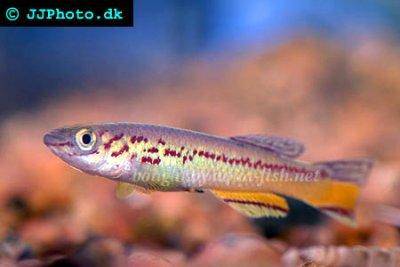






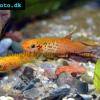 Lyretail
Lyretail 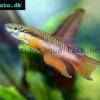 Splendid
Splendid 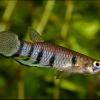 Redchin
Redchin  Panchax
Panchax 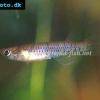 Sixbar
Sixbar 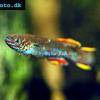 Blue
Blue  Blue
Blue 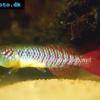 Guenthers
Guenthers 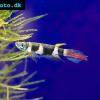 Banded
Banded